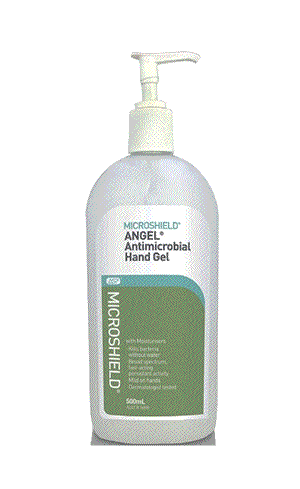Consider the antimicrobial handwash, shown on the right. It appears harmless, in fact, it appears quite logical to put antimicrobial agents in a handwash. Who wouldn't be washing their hands with this gel and insisting that others do the same for the sake of sanitation?
By flooding our environment with antibiotics, however, people unwittingly accelerate bacterial evolution where bacteria evolve radical new mechanisms to survive. This lead to the evolution of superbugs.
If you think the use of antibiotics is limited to handwash or use in hospitals then you are wrong.
The world is simply inundated by antibiotics and found in environments no one would suspect antimicrobials would be present. Antimicrobial drugs consumed by people often pass out of the body and into sewerage treatment plants, and becomes part of the water cycle. In fact, about 80% of antibiotic use, in the US, occurs in the livestock industry. Manure rich in antibiotics is routinely spread on farm soil all over the country.
Once routinely and easily treated by antibiotics, bacterial infections are becoming life-threatening. A newly detected strain of bacteria, Methicillin-resistant Staphylococcus aureus (MRSA), now is responsible for more deaths than ever before due to the fact that it is not only resistant to the antibiotic methicillin but to a range of antibiotics.
Now MRSA did not just appear overnight, S. aureus was common in hospitals in the 1950s and was responsible for minor skin infections. During the 1960s infection by S. aureus was easily treated with the introduction of the antibiotic methicillin. It took less than a year for the bacteria to become resistant to this antibiotic. Unknowingly doctors had encouraged the evolution of methicillin-resistant S. aureus.

View the video on the right of a BBC news item titled "BBC News Antibiotics resistance as big a risk as terrorism medical chief"
1) What does Professor Dame Sally Davies have to say about the dangers of, what has so far being, minor infections?
2) We are always fearful of bacteria but bacteria are part of what system in our body?
3) These bacteria are beneficial as long as they do not gain entry into our blood or lungs. What possible life threatening diseases can they cause?
4) What is happening to bacteria that is so alarming?
5) Why are drug companies reluctant to spend money to produce new antibiotics?
Consider the video on the right of antimicrobial resistance.
1) How do Humans come into contact with antimicrobial or antibiotics?
2) Explain using the Darwin's theory of evolution and the terms "Selection Pressure" and "Survival of the fittest" how bacteria develop antimicrobial resistance.
3) Antimicrobial susceptible bacteria can gain antimicrobial resistance by mutation or by accepting antimicrobial resistant genes from other bacteria. This is done in three ways:
- mutation,
-
destruction and inactivation,
-
efflux
Describe how each of the above mechanisms works.
4) Bacteria are masters of evolution. They evolve quickly due to large numbers and short life cycles. Three ways that bacteria share or exchange genes with each other, even between different species of bacteria, are listed below. Describe how each works..
- conjugation
- transduction
- transformation
1) What is meant by commensal. Give an example.
2) What is horizontal gene transfer?
3) Living with commensal bacteria that have built up antimicrobial resistance may not always prove to be a bad thing, however, explain what can happen if a deadly pathogen which has not evolved resistance to antimicrobial drugs lives in the body alongside other organisms with resistance.
4) Bacteria have certain structures called plasmids. What is a plasmid and what is its function?
5) Why is it so alarming about putting antibiotics to hand soap?
Formulate an argument against putting antibiotics in hand soap.
Charles Rock, a researcher at St. Jude Children’s Research Hosptial in Memphis, Tenn., also published work in Nature saying “The use of triclosan in these products will lead to the emergence of resistance. There is no strong rationale for its use.”
Soon after Rock’s article, the Soap and Detergent Association and the Cosmetic, Toiletry and Fragrance Association released a statement disputing his findings. It blamed the resistance problem on doctors’ over-prescribing of antibiotics.
“Antibacterial products do not cause bacterial resistance,” Ed Kavanaugh, president of the cosmetics group, said in the statement. “They kill germs, thus breaking the circle of infection.”
Argue, from an evolutionary point of view, that by killing the vulnerabe bacteria we are in essence encouraging the evolution of resistant strains.